Increase Your Hireability As a PhD By Knowing These 7 Industry Trends

When I finished my PhD I had no idea how things worked outside academia.
As a PhD student, I always thought I would become a professor, so I had focused all my energy on learning everything about academia.
But, when I realized that I wanted to leave the university I was stumped.
What was it like in industry?
What was important in industry?
What did I need to know about industry to be successful?
When I spoke with people in industry they told me that employers might see me as ‘just an academic’ and not want to hire me.
How could I combat that?
They said I needed to learn as much as I could about what was happening in the industry I wanted to join.
I needed to research the trends that were on the rise and be ready to talk about them.
So I started reading and attending events to learn as much as I could.
The next time I had an interview, I was able to confidently ask questions the company and the industry because I spent time learning.
Why Employers Want PhDs To Know The Latest Industry Trends

Have you been told that as a PhD you are ‘overqualified’ for a position?
You are not alone.
Many PhDs hear this from employers when they don’t want to hire you.
But it’s just an excuse.
Being overqualified means that you have all the skills they need and then some, so, if this is really what was going on, of course they would hire you.
Why wouldn’t they want to hire someone who has all the skills they need?
What an employer is really saying when they call you ‘overqualified’ is that you don’t have the industry know-how they are looking for, all they see are your academic skills.
But you can combat this judgement.
All you need to do is start learning the latest trends in business, the latest trends in your industry, and learn about the companies you are interested in pursuing.
According to a recent study by Morneau Shepell, only 15% of employers strongly agree that new graduates have basic business acumen skills.
On the other hand, 49% of employers strongly believe that new graduates have the required technical skills.
Employers know you have the technical prowess, but they don’t think you have the business acumen, commercial acumen and industry knowledge needed to succeed.
This leaves many employers struggling to find employees, according to Robert Half, 91% of employers reported struggling to find qualified candidates for professional-level positions.
Prove to employers that you are the right job candidate.
7 Business Trends PhDs Should Be Aware Of For 2019
You have the skills that an employer needs in a new hire, but you must know how to showcase those skills and you need to learn how to stay up to date with the latest industry trends.
The ‘soft skill’ of commercial acumen or business acumen develops out of a strong understanding of current market trends.
By constantly staying informed about what is happening in your industry you can make sound decisions for a company.
So you need to start learning about the latest trends in your industry.
Here are 7 business trends that PhDs, especially those interested in biopharma or biotech, need to be aware of for 2019…
1. Increased prevalence and use of artificial intelligence.
The use of artificial intelligence is increasing across industries, including the Biopharma and Biotech industries.
Artificial Intelligence is broadly defined as “the theory and development of computer systems able to perform tasks that normally require human intelligence, such as visual perception, speech recognition, decision-making, and translation between languages.”
When applied to the medical industry this means that AI can be used to process data and make decisions – instead of relying on a human to do so.
One example is AI being applied to the identification of biomarkers.
For example, Sanofi Pasteur has partnered with Berg Health to use 2 AI tools developed by them: “Interrogative Biology” and “bAIcis” to aid in the identification of biomarkers for vaccine development.
Another organization, Insilico Medicine, is combining the power of deep-learning with blood biochemistry, imaging data, and transcriptomics to extend human productive longevity and transform every step of the drug discovery and drug development process through excellence in biomarker discovery, drug development, digital medicine, and aging research.
However, the application of AI is not limited to drug discovery and the identification of new targets.
It is also being applied to develop autonomous machines capable of treating diseases, as a way to predict consumer behaviors, to assist in the processing of radiology images, and many other applications.
2. Increase in biosimilars.
A biosimilar is a biological product that is highly similar to a licensed reference biological product notwithstanding minor differences in clinically inactive components.
Biosimilars come with a much lower price tag than the biological product that they are based on.
With the increasing pressure on the biopharmaceutical sector from lawmakers to ensure accessibility of essential therapies, the number of generics and biosimilars in the market will continue to grow.
And as the number and prevalence of these biosimilars grows, companies who created the initial biologic can expect to see some revenue loss.
This projects revenue loss has forced innovators to accelerate the search for novel products.
However, it has also resulted in a reduction of healthcare expenditures for patients.
But there are major concerns with biosimilars concerning safety and effectiveness.
How can the efficacy in replicating the therapeutic values of the drugs these biosimilars seek to replace be measured?
Can these biosimilars meet the same regulatory standards?
Answering these questions are some of the challenges manufacturers are facing.
3. Blockchain becoming more widely used.
The security, ease of managing large volumes of data, ability to track any changes made to the database, and secure sharing of data offered by blockchain makes it an attractive tool for healthcare clinical data management.
Blockchain can enable patients to track important health related information, such as a schedule of medical visits, immunization, bills, and personal healthcare records.
This will also allow for a patient’s history to be securely documented and given to the appropriate physician, preventing people from seeing a doctor who does not have their complete medical history available to them – no matter what provider the healthcare is coming from.
One startup, Patientory, is already developing a blockchain-based platform for patients, as well as medical organizations.
Over the years, drug counterfeiting has become a major problem for pharma.
Counterfeit medication leads to about 800,000 deaths each year.
The French startup, Blockpharma, is applying blockchain to solve this issue.
Their technology will enable better tracking of drugs through the supply chain, make it more efficient to recognize counterfeits and alert others.
Considering its ability to securely manage large volumes of data, one healthcare associated field ideal for the application of blockchain is clinical trials.
Blockchain will reduce risk of fraud, loss of data, and improve reproducibility.
4. Putting the patient at the center.

Since we are living in the information age, or the knowledge age, patients are able to seek out information via the internet that was previously not accessible to them.
Patients are able to learn about their health, learn about clinical trials and learn about general healthcare development much more than was possible before.
Patients are also able to form more support groups to discuss their disease and available treatments.
And the members of these groups can access one another easily via the internet even if they are not physically close to one another.
Patient accessibility of knowledge and information about disease states is also pushing toward the desire for more personalized medicine.
While the development of precision or personalized medicine is still in the future patients are continuing to seek out information that is relevant to them and to push for therapies that suit their specific needs.
This puts pressure on the healthcare and pharmaceutical companies to put these patients concerns first.
Additionally, by learning from these patients and support groups companies can benefit by adjusting patient protocols to better suit real world conditions and improve patient quality of life.
5. Wearable technology.
The development of health oriented wearable technology is one avenue that tech companies are using to enter the multibillion dollar healthcare industry.
From Apple partnering with the health insurance company Atena to a Google subsidiary developing a shoe that can track weight and movement – the tech industry is making advancements in the wearable technology healthcare field.
This is exciting news, because the use of wearables allows clinicians to get better patient data since the device can be with patients at all times.
Additionally it has large implications for clinical trials, which are often difficult for patients to comply with.
Wearable technologies can decrease the amount of time that patients need to spend at the clinical trial site and can increase the amount of information that clinicians are able to get from the patients.
As an example, the VERKKO phase IV diabetes clinical trial used a remote clinical trial platform integrated with a 3G-enabled wireless blood glucose meter, spent 66% less time in study coordination activities and achieved 18% higher compliance rates.
Wearable technology is decreasing the complexity of clinical trial participation and enabling better results.
It also may allow for much larger scale trials than were possible without wearable technology.
6. Big data driven decisions.

Big data is everywhere.
And currently, data science is one of the hottest career tracks available to PhDs.
But you need to know about how big data is affecting the biopharma industry, whether you want to pursue a data scientist career or not.
Healthcare and Pharmaceutical companies collect massive amounts of data from patients and customers.
But this data is useless if it is not processed, analyzed and then the conclusions drawn from that data implemented.
So companies, including GSK, are investing heavily into data analytics and using it as a method to develop new therapies.
However, the sheer scale of data available makes really digging into the data an expensive endeavor.
But, those companies who do not find a way to benefit from the use of big data will suffer.
Data driven decision making will only increase as the systems and tools become more sophisticated and more widely available.
7. Growing importance of collaborations and network expansion.
The never ending search for new medicines and the decreasing profitability in research and development lend to an environment where external collaborations are attractive.
Companies are constantly collaborating, through licensing, mergers and acquisitions, and/or joint ventures.
You may hear in the news about the large mergers and acquisitions, but there are also smaller collaborations happening every day that are driving innovation and product development.
For example, Takeda recently announced a collaboration between Memorial Sloan Kettering and Noile-Immune Biotech to investigate cell therapies.
While, as just one example, a lesser known collaboration between I-Mab Biopharma and Bio-Cancer Treatment International to explore the potential of arginine depletion therapy in autoimmune diseases was also recently announced.
This collaboration between companies is especially strong as the technology industry moves into the healthcare space.
This can been seen in the previous example of Apple partnering with Atena to develop wearable technologies.
Collaborations are constantly happening in the Biopharma industry and they will affect the job market.
As a job seeker it’s important you are aware of these collaborations and changes so that you can position yourself as a top job candidate who knows where the market is heading.
Industry employers expect you to have a certain level of industry knowledge. As as a PhD just leaving academia, it’s especially important that you convey your industry knowledge to employers. They might assume, that since you are an academic PhD you might not be savvy to how things work in industry. By staying up to date with the current industry trends, such as increased prevalence and use of artificial intelligence, increase in biosimilars, blockchain becoming more widely used, putting the patient at the center, wearable technology, big data driven decisions, and growing importance of collaborations and network expansion. If you show industry employers that you are aware of the current industry trends you will put yourself above the competition.
If you’re ready to start your transition into industry, you can apply to book a free Transition Call with our founder Isaiah Hankel, PhD or one of our Transition Specialists. Apply to book a Transition Call here.

ABOUT CATHERINE SORBARA, PH.D.
Cathy has a PhD in Medical Life Science and Technology and is COO of the Cheeky Scientist Association. Cathy is passionate about science communication including translating science to lay audiences and helping PhDs transition into industry positions. She is Chair of Cambridge AWiSE, a regional network for women in science, engineering and technology. She has also been selected to take part in Homeward Bound 2018, an all-female voyage to Antarctica aimed to heighten the influence of women in leadership positions and bring awareness to climate change.
































